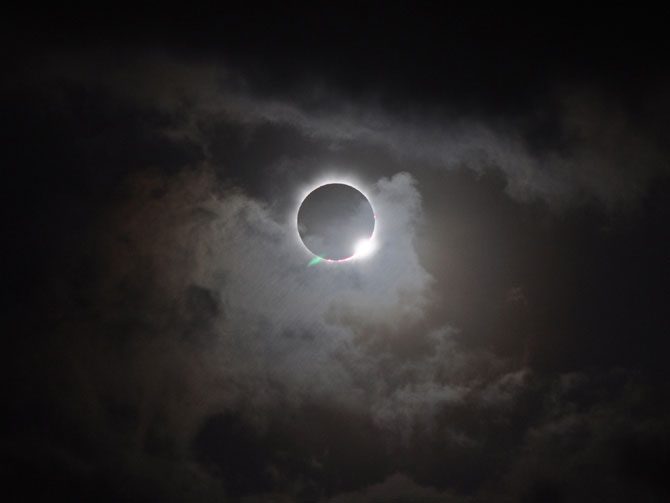This year, there will be three occasions when the Moon enters special positions in front of Earth, creating spectacular images.
1. Annular Solar Eclipse on April 20
The solar eclipse occurs when the Moon accidentally positions itself between the Sun and Earth in the morning, creating a stunning “annular solar eclipse.” Residents in the southern half of Vietnam will be able to witness this eclipse as a partial solar eclipse.

An annular solar eclipse observed from Australia – (Photo: NASA).
An annular solar eclipse occurs when the distance of the Moon from the two celestial bodies it obscures is just right to form a beautiful “Black Moon” during the day, surrounded by a halo of the Sun that is not completely obscured, creating an enchanting sight.
According to Time and Date, South Asia, East Asia, Australia, the Pacific region, the Indian Ocean, and Antarctica will see this ring, while the rest of Australia and parts of Southeast Asia will observe it as a partial solar eclipse.
Path of the annular solar eclipse in April – (Photo: TIME AND DATE).
In Ho Chi Minh City, the eclipse will begin at 8:34 AM and end at 1:59 PM on April 20. We are fortunate, as it is estimated that only 8.77% of the world’s population – approximately 693 million people – will be able to witness the “Black Moon” this April morning.
2. Penumbral Lunar Eclipse in May
This time, the Moon will hide from the Sun at night and enter the penumbra of Earth. However, instead of entering the dark shadow and creating a blood moon (total lunar eclipse), it will only pass through the penumbra, making the Moon appear covered with a veil of darkness.
Australia, Africa, and most of Asia, along with parts of Antarctica, can witness this penumbral lunar eclipse. In Vietnam, the penumbral lunar eclipse will begin at 10:14 PM on May 5, reach its peak at 12:22 AM on May 6, and end at 2:31 AM.
Path of the penumbral lunar eclipse in May – (Photo: TIME AND DATE).
It is estimated that up to 6.62 billion people worldwide will witness this phenomenon as it covers the most populous continents, with 4.49 billion people able to see it from start to finish.
3. Annular Solar Eclipse in October
This solar eclipse will be observable in West Africa, the Americas, parts of the Pacific, Atlantic, and the Arctic.
According to Time and Date, the phenomenon will begin at 10:03 PM on October 14, Vietnam time, reaching its peak at 12:59 AM on October 15 and ending at 3:55 AM.
Path of the annular solar eclipse in October – (Photo: TIME AND DATE).
Therefore, we will not be able to see this annular solar eclipse and will have to “yield the opportunity” to those in the daytime part of the Earth at that time – an estimated 1 billion people will have the chance to witness it.
The annular solar eclipse in October will appear with a “Black Moon” that looks larger than in April, with a thinner fiery outline.





















































